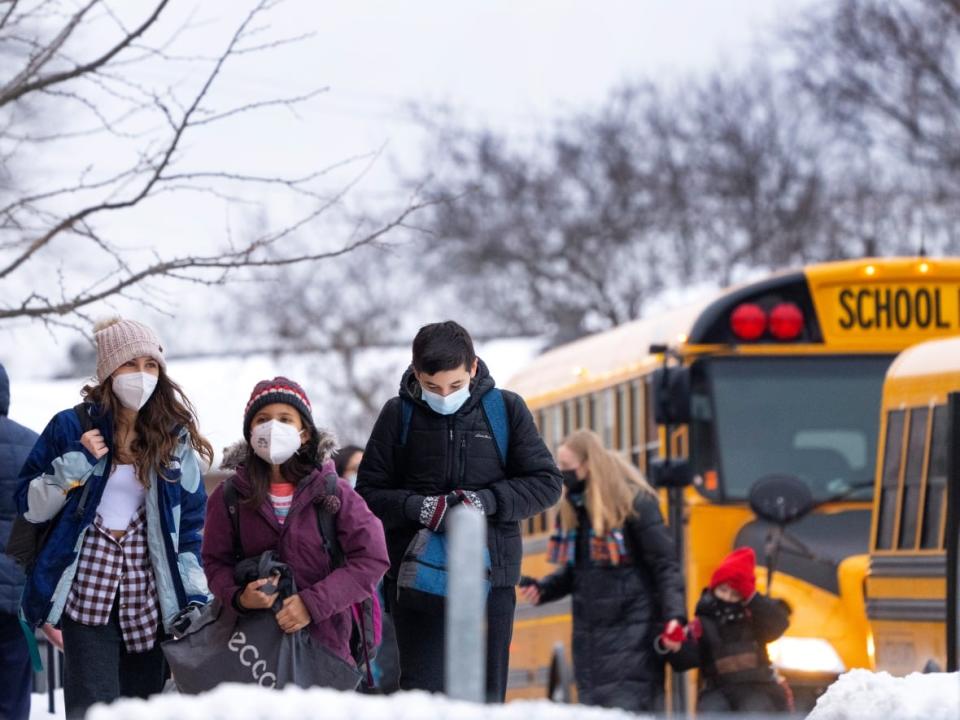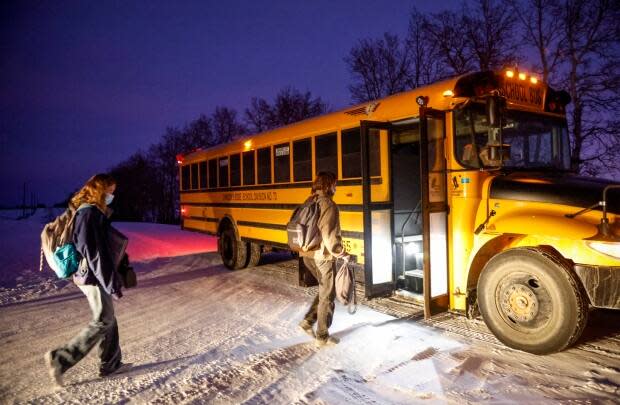How are schools tracking COVID's effect on classrooms? Provinces shift to tracking absences

As a high number of COVID-19 infections, driven by the Omicron variant, collides with our traditional influenza season, provinces and territories are shifting coronavirus tracking in schools.
Like most sectors, education is grappling with serious limitations in COVID-19 testing after multiple regions drastically cut access to PCR tests amid sky-rocketing cases, and any tracking of rapid antigen tests typically relies on self-reporting.
So officials are largely falling back on a familiar metric in classrooms: Tallying staff and student absences.
It's data that public health is already familiar with monitoring in school settings — for example, in the annual tracking of influenza, said Dr. Lynora Saxinger, an infectious disease specialist at the University of Alberta in Edmonton.
But for a public accustomed to daily COVID-19 case counts, she acknowledges it may take some getting used to.
"It's very much a shift, from thinking about individual cases and individual numbers as the metric of control, to … community and population as a metric of control," she said.
WATCH | Infectious diseases specialist on the value of tracking school absences:
"We've become number-gazers over the course of the pandemic, but that's no longer going to be informing what we need to do in the same way. It's no longer as relevant to what we have available in terms of response," she said. "And so it's a shift of philosophy as well."
Here's a quick comparison of how provinces and territories are shifting how they monitor COVID-19 in Canada's primary and secondary schools.
Atlantic Canada
The first province back to in-person learning on the East Coast, Nova Scotia is monitoring staff and student absences, the latter of which was about double the normal rate after the first week back. If that figure hits 10 per cent, school administrators are to alert public health for further guidance. Those testing positive must notify close contacts themselves and may report it to the school, but school administrations are not expected to tackle contact tracing, nor issue exposure letters.
Newfoundland and Labrador students returned to class this past Monday. Anyone who tests positive for COVID-19 must notify their contacts, however, individuals who are absent due to illness are not required to report the cause to their school. Public health and school administrators will not be contact tracing in schools.

New Brunswick students are set for an in-person return next Monday. Public health will no longer be conducting contact tracing for the general public, reserving resources for people in vulnerable settings, who are most likely to be hospitalized. Families must notify schools if students test positive and inform their close contacts.
On Prince Edward Island, where in-person school restarts Monday, students and school staff who test positive are to notify close contacts directly or work with their school and the COVID education response team to do so. That team then sends exposure or close-contact notifications to families. Education officials will also post all school-based exposure notices publicly and keep health officials updated on positive cases, contact management and absences. Schools will not automatically close based on single cases. PCR and molecular COVID-19 testing is still in place for the public on P.E.I.
Central
Quebec public health officials will no longer be dismissing classes or cohorts. Schools are not required to contact families regarding positive cases. Administrations can shift in-class learning to remote classes if more than 60 per cent of students are isolating or if they lack adequate staff for school operations. School staff remain on the list of those who can access PCR testing in the province.

Ontario students are not required to disclose COVID-19 test results to schools as part of general absence reporting, which is being shared provincially in a new dashboard. Many boards are also sharing information themselves, including data about school absences and/or positive COVID-19 cases that are self-reported by families.
Positive and presumed positive cases must notify their own high-risk contacts. Schools will not be routinely notifying about exposures. Public health will no longer be dismissing classes/cohorts, but school officials may do so due to staffing constraints. Schools will flag public health and communicate to families if the staff and student absence rate rises past 30 per cent.
Prairies
Saskatchewan staff and students who test positive for COVID-19 should notify their own close contacts, but are not required to share test results with schools, the province announced Thursday in a case management update that relaxed rules about self-isolation. School leaders will monitor absences due to illness and are no longer required to report exposures. Public health will monitor school COVID-19 case rates and transmission patterns, along with investigating outbreaks in school settings. The province maintains a page showing COVID-19 case counts and active outbreaks in schools in the preceding two weeks.

Alberta is shifting its approach to reporting COVID-19, though details are pending. Schools are monitoring the rate of absence due to illness, though students are not required to disclose the reason for an absence. People who test positive are to notify their own close contacts.
Administrators are not required to notify families about exposures, though multiple school boards have been sharing information with families, including absence rates due to illness and/or self-reported positive COVID-19 cases. Schools may shift a class or grade to remote learning, if needed, due to lack of staffing. Decisions to shift an entire school to remote will be made by the provincial Ministry of Education with input from school officials.
Manitoba staff and students testing positive for COVID-19 are strongly encouraged to notify their schools. Administrators are no longer required to issue exposure notices, but must track attendance patterns, prevalence of self-reported cases and monitor Manitoba's dashboard of school-related cases. If a school has increased absences, reported cases or staffing concerns related to COVID-19, administration must alert public health and Manitoba Education for guidance. School staff and students remain eligible for PCR testing if they have first tested positive with a rapid antigen test.
The North and West Coast
Yukon school staff and students are not required to disclose specific reasons for illness-related absences. School officials will track absences, notifying and seeking guidance from public health if attendance falls significantly below normal. A provincial website shows whether schools are continuing in-person or shifted to remote, while schools will also inform families of any shifts in learning delivery.
School staff or students in Nunavut positive for COVID-19, presumptive cases or those who are symptomatic are urged to contact public health. Schools have largely reopened at either 50 per cent or 100 per cent capacity, as recommended by health officials, who are working with schools to assess and offer community-specific guidance every week. Administration must communicate to families, including about the status of schools being open and cohort plans.

In Northwest Territories, those testing positive — including on a self-administered rapid antigen test — must contact public health, which continues to inform schools and send out exposure notices to those in affected classes and cohorts. If more than 10 per cent of a school's population is affected, the Department of Education will be alerted and share guidance for next steps.
In British Columbia, public health officials are transitioning school-related monitoring to what's done for other viral illnesses. Those positive for COVID-19 are to notify their own close contacts and register their absence as illness-related with their school. Administrators are no longer notifying families of exposures, but will track attendance and illness-related absences. Schools will flag the district, families and public health if: attendance falls 10 per cent below "historical normal," fewer than 75 per cent of students in a grade are attending, or a school is considering or implementing a temporary closure due to lack of staff.

